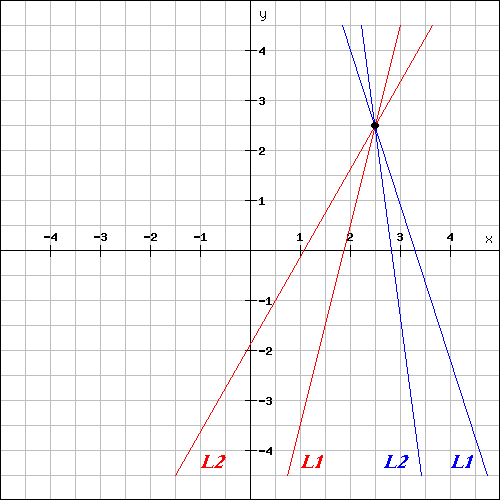Events & Promotions
|
|

GMAT Club Daily Prep
Thank you for using the timer - this advanced tool can estimate your performance and suggest more practice questions. We have subscribed you to Daily Prep Questions via email.
Customized
for You
Track
Your Progress
Practice
Pays
Not interested in getting valuable practice questions and articles delivered to your email? No problem, unsubscribe here.
- Nov 22
11:00 AM IST
-01:00 PM IST
Do RC/MSR passages scare you? e-GMAT is conducting a masterclass to help you learn – Learn effective reading strategies Tackle difficult RC & MSR with confidence Excel in timed test environment - Nov 23
11:00 AM IST
-01:00 PM IST
Attend this free GMAT Algebra Webinar and learn how to master the most challenging Inequalities and Absolute Value problems with ease. - Nov 25
10:00 AM EST
-11:00 AM EST
Prefer video-based learning? The Target Test Prep OnDemand course is a one-of-a-kind video masterclass featuring 400 hours of lecture-style teaching by Scott Woodbury-Stewart, founder of Target Test Prep and one of the most accomplished GMAT instructors.
C
Be sure to select an answer first to save it in the Error Log before revealing the correct answer (OA)!
Difficulty:
 65%
(hard)
65%
(hard)
Question Stats:
54% (01:48) correct 46%
(02:01)
wrong
46%
(02:01)
wrong  based on 656
sessions
based on 656
sessions
History
Date
Time
Result
Not Attempted Yet
If the slopes of the line l1 and l2 are of the same sign, is the slope of the line l1 greater than that of line l2?
(1) Lines l1 and l2 intersect at point(a,b) where a and b are positive
(2) The X-intercept of line l1 is greater than the X-intercept
(1) Lines l1 and l2 intersect at point(a,b) where a and b are positive
(2) The X-intercept of line l1 is greater than the X-intercept
Kudos
Bookmarks
Topic moved to DS subforum.
If the slopes of the line l1 and l2 are of the same sign, is the slope of the line l1 greater than that of line l2?
(1) Lines l1 and l2 intersect at point (a,b) where a and b are positive --> clearly insufficient: we can rotate the lines on this point so that we get an YES, as well as NO answers. Not sufficient.
(2) The X-intercept of line l1 is greater than the X-intercept of line l2 --> also insufficient: we can draw numerous lines with the same sign slopes so that we get an YES, as well as NO answers. Not sufficient.
(1)+(2) We know that: the slopes of the lines are of the same sign, that they intersect in I quadrant and the X-intercept of line l1 is greater than the X-intercept of line l2. There can be two cases: 
graph 5.png [ 19.87 KiB | Viewed 30077 times ]
You can see that in both cases the slope of L1 is greater than the slope of L1 as a steeper incline indicates a higher absolute value of the slope.
In red case: both lines have positive slope, L1 is steeper thus its slope is greater than the slope of L2;
In blue case: both lines have negative slope, L2 is steeper thus its slope is more negative (the absolute value of its slope is greater) than the slope of L1, which also means that the slope of L1 is greater than the slope of L2.
Answer: C.
For more on this topic check Coordinate Geometry chapter of Math Book: math-coordinate-geometry-87652.html
P.S.
Please post PS questions in the PS subforum: gmat-problem-solving-ps-140/
Please post DS questions in the DS subforum: gmat-data-sufficiency-ds-141/
No posting of PS/DS questions is allowed in the main Math forum.
kenguva
If the slopes of the line l1 and l2 are of the same sign, is the slope of the line l1 greater than that of line l2?
(1) Lines l1 and l2 intersect at point (a,b) where a and b are positive --> clearly insufficient: we can rotate the lines on this point so that we get an YES, as well as NO answers. Not sufficient.
(2) The X-intercept of line l1 is greater than the X-intercept of line l2 --> also insufficient: we can draw numerous lines with the same sign slopes so that we get an YES, as well as NO answers. Not sufficient.
(1)+(2) We know that: the slopes of the lines are of the same sign, that they intersect in I quadrant and the X-intercept of line l1 is greater than the X-intercept of line l2. There can be two cases:
Attachment:
graph 5.png [ 19.87 KiB | Viewed 30077 times ]
In red case: both lines have positive slope, L1 is steeper thus its slope is greater than the slope of L2;
In blue case: both lines have negative slope, L2 is steeper thus its slope is more negative (the absolute value of its slope is greater) than the slope of L1, which also means that the slope of L1 is greater than the slope of L2.
Answer: C.
For more on this topic check Coordinate Geometry chapter of Math Book: math-coordinate-geometry-87652.html
P.S.
Please post PS questions in the PS subforum: gmat-problem-solving-ps-140/
Please post DS questions in the DS subforum: gmat-data-sufficiency-ds-141/
No posting of PS/DS questions is allowed in the main Math forum.
Kudos
Bookmarks
L2 is steeper thus its slope is more negative (the absolute value of its slope is greater) than the slope of L2 ... Does it mean than L1??










